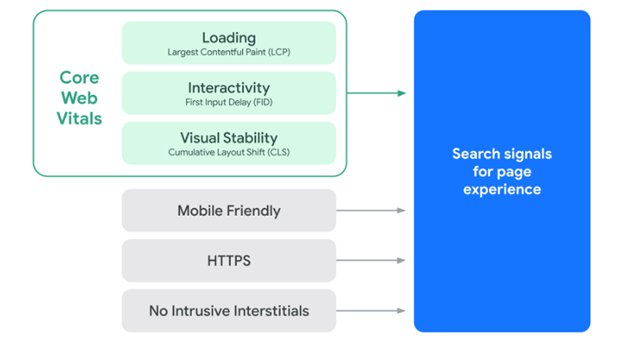Secondary ranking factors: going beyond content
Looking at additional search engine concerns

Content remains one of the core parts of SEO. Search engines depend upon someone having the answers to queries, so the symbiotic relationship is almost a necessity for both.
Rasa Sosnovskytė, Head of SEO and Growth Marketing at Oxylabs.
As the internet progressed, however, engines had to figure out what to do when there’s an overflow of answers to queries. Most popular Google searches likely have hundreds if not thousands of pages with decently written answers.
So, Google decided on a multitude of other factors that are used to determine, which result should be promoted higher. A lot of them revolve around the user experience. After all, if the answers are available throughout many pages, shouldn’t the one with the easiest access be the victor?
Going without Page Experience
While we generally consider ranking factors to be always applicable (and most of them are), Google has repeatedly indicated that there are cases where they ease off. From publicly available information, personal experience, and some data, it seems that ranking factors will differ for:
- Your Money or Your Life Pages (YMYL). Unlike the following entries, these pages purportedly have extremely high quality requirements rather than easing off of ranking factors. It is, however, not entirely unusual to find the same website ranking several pages for a single query.
- Extremely niche queries. Some queries have so few answers that Google has no choice but to pick the results that match the intent. Page experience, core web vitals, and other factors are often sidelines for the primary goal - showing a proper answer.
- Clear intent. Apparently, at least according to John Mueller, there are cases where the intent is so transparent that page experience’s impact is irrelevant. His wording might suggest that these could be some transactional keywords or branded searches.
The third entry in the list might be somewhat of a new addition. Page experience’s relation to search intent was indicated by John Mueller in the February 25th Office Hours: “[...] in situations where we have a strong, clear kind of intent from the query, where we can understand that they really want to go to this website, then from that point of view we kind of can ease off on using Page Experience as a ranking factor.”
Mueller’s continuation gives us insight into when Page Experience starts mattering. He goes on to say that: “On the other hand, if all of the content is very similar in the search results page, then probably using Page Experience helps a little bit to understand which of these are fast pages [...] and which of these are kind of less reasonable pages to show in the search results.”
It can be taken to mean that almost every query we work with daily will be impacted by Page Experience. That can be a little troublesome, especially for extremely large websites.
Focusing on Page Experience
Before heading onwards, it’s important to note that Page Experience won’t produce drastic changes to rankings, no matter how well the optimization goes. It should be considered as a second front of competition - it only matters if the content is as good as it gets.
Google themselves have provided a handy chart for everything that goes into Page Experience. They haven’t indicated which of these are most impactful, however, it’s unlikely that fixing only some of them is a great idea.

Core Web Vitals (CWV) seems to be the area most contested and debated about. It includes three elements:
- Largest Contentful Paint (LCP). Defined as the time taken to render the largest image or text within the viewport, starting from when the page first started loading. It’s recommended to keep the 75th percentile of pages below 2.5s for a “Good” score.
- First Input Delay (FID). Defined as the time taken from the user’s first interaction to the initiation of event handlers. In order words, from the first interaction until the first reaction. It’s recommended to keep the 75th percentile of loads under 100 ms.
- Cumulative Layout Shift (CLS). Defined as the measure of the largest burst of unexpected layout shifts, which move visual elements on the page. Before June 1st, 2021, it was measured as the sum total of layout shifts. Google says that the 75th percentile of CLS should be below 0.1s .
All three elements have recommendations issued by Google for the best results. These are categorized into three categories: “Good”, “Needs improvement”, and “Slow”. Since Google has repeatedly stated that they use the status delivered by the Core Web Vitals, it’s unlikely that improving LCP, FID, CLS above “Good” does anything.
The remaining three are rather self explanatory, at least on a surface level. HTTPS has to be enabled, so it’s an on-off switch for rankings. Mobile friendly includes a lot of best practices that make the website accessible. Intrusive interstitials should be completely disabled for the best effect.
Additionally, there are some interesting caveats to uncover, as discussed by John Mueller repeatedly over several Office Hours. First, all of these ratings are taken into account as an overall picture. Optimizing one metric and leaving the others behind is unlikely to have any benefit. In the same episode, he even states that scores have no impact on indexing or crawling budgets.
Finally, in a recent episode Mueller has revealed two interesting facts. One is that the overall Page Experience rating is sort of only relevant for the high traffic pages. A part of the traffic is sampled, which commonly includes only the aforementioned pages, and the evaluation is applied to the entire website.
In cases, where a website might have an unusually large amount of pages, they may be categorized. He makes an example of an ecommerce platform where they may have enough data to create a separate category of “product pages” for which Page Experience evaluations may differ from the entire website.
As a result, focusing one’s efforts towards optimizing Page Experience for a carefully selected number of pages might produce the same results with less resource usage.
Conclusion
Overall, Page Experience is a primary ranking factor, but it might not have been as important as it was hyped up to be. It exists in cases where there’s lots of great content that provides an almost equally valuable answer to a query. Google then attempts to optimize the user experience of getting the answer, which is when Page Experience comes in handy.
Page Experience optimizations, however, have clearly defined boundaries. Not only is there no good reason to go beyond the “Good” evaluation criteria, but optimizing all pages might not be necessary either. As a result, it’s best to collect the most traffic-heavy pages and start improvements from there.
Are you a pro? Subscribe to our newsletter
Sign up to the TechRadar Pro newsletter to get all the top news, opinion, features and guidance your business needs to succeed!
Rasa Sosnovskytė is Head of SEO at Oxylabs.io.